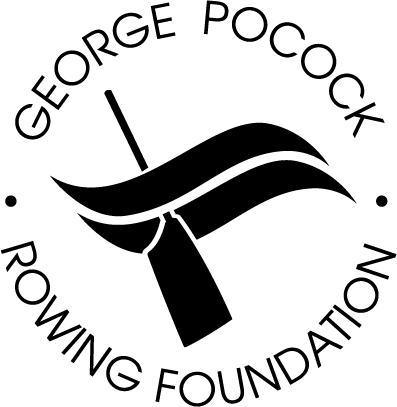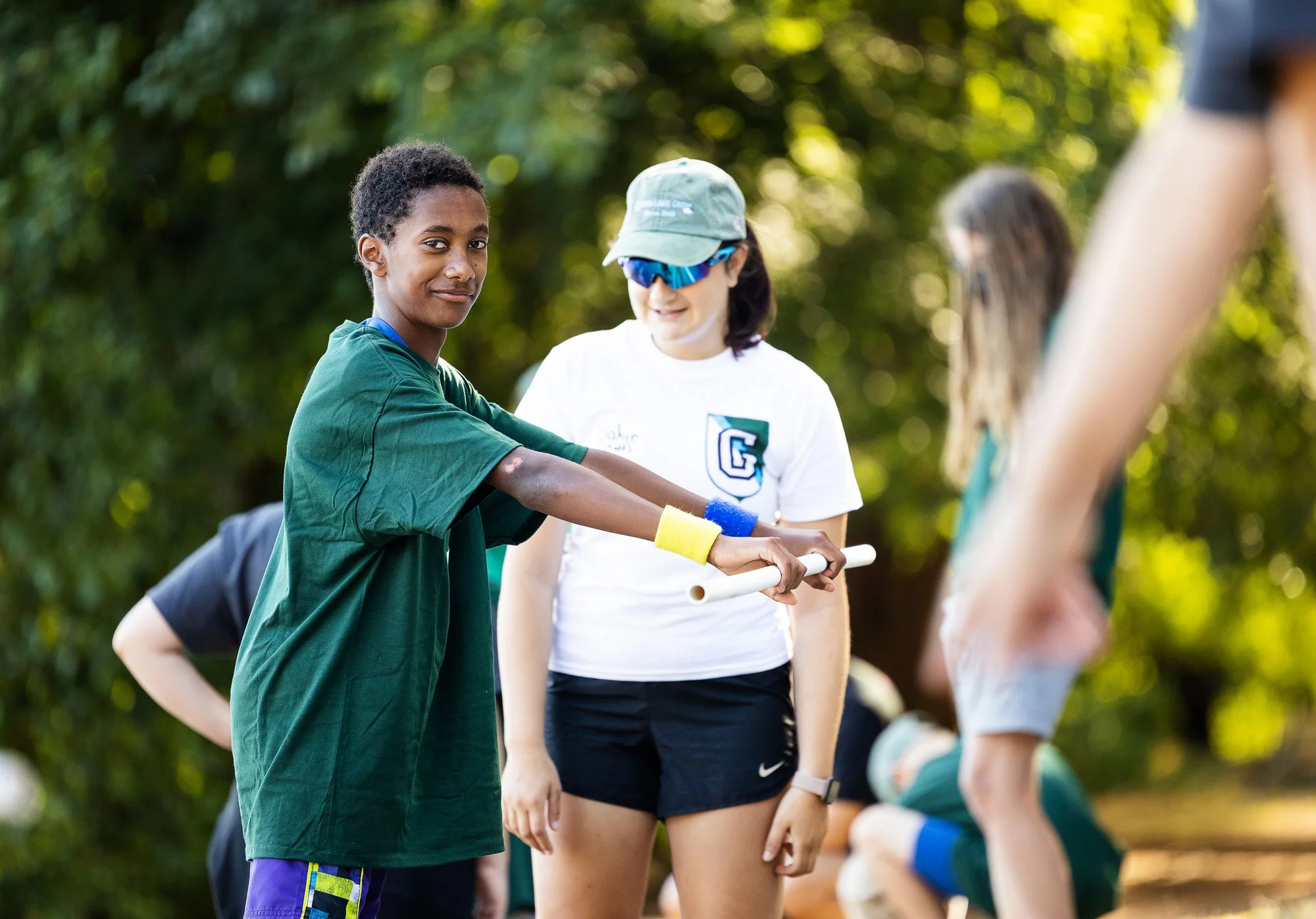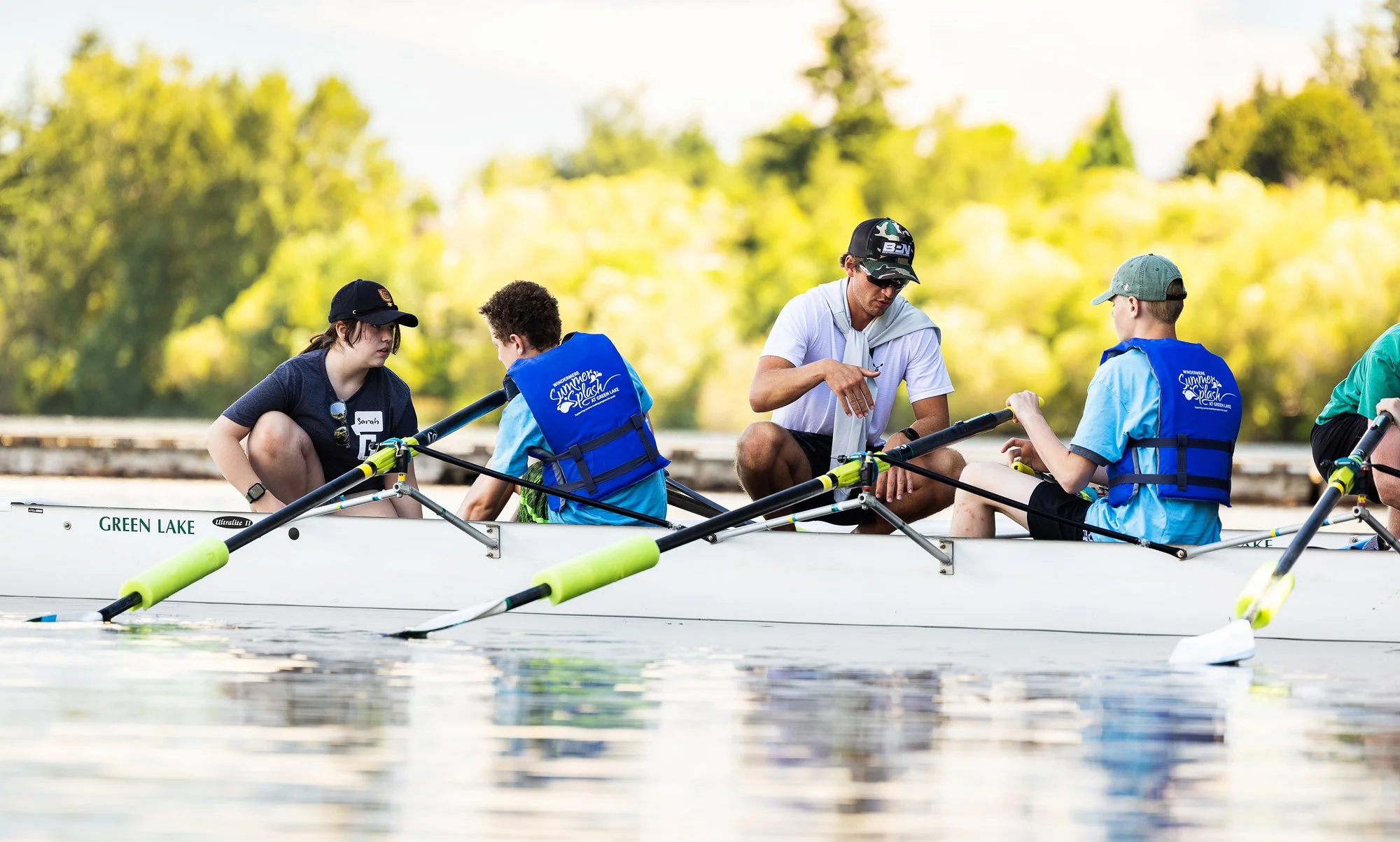Against All Odds
Rowing builds resilience.
We say it. We know it. But can we explain how it happens?
The story of Green Lake Crew’s pilot STEM to Stern program launch is a perfect example of perseverance.
At the beginning of 2022, the Greenlake Rowing Advisory Council, the Green Lake Crew, and their Equity Committee joined forces to make the Green Lake Junior Crew a more diverse and equitable community program.
In August of the same year, through a grant from the George Pocock Rowing Foundation, Green Lake Crew (GLC) launched a STEM to Stern (S2S) pilot program, in partnership with the Wallingford Boys & Girls Club.
Mike Stanley, Vice President of GLC’s Rowing Advisory Council shared, “In many ways, this program completes a wonderful circle in that we were founded 74 years ago in partnership with the same Boys Club of Wallingford of which Clarence Massart was then president.
USRowing’s STEM to Stern program, which increases access to rowing programs across the country by eliminating barriers that many communities face, and includes a STEM component as part of the program, helps students build strong academic foundations and find success on and off the water.
GLC sought S2S as a means to serve youth not currently reached by their current rowing program with the ultimate goal of creating a diverse middle school program. The initiative aimed to solve logistical issues and accessibility barriers present in the community, knowing that getting kids from underrepresented populations to experience rowing on the water is a huge challenge, and even more so for a city program where stipulations surrounding transporting kids under 13 prevent many programs from coming to fruition. Additionally, costs to participate in rowing are always a barrier to accessibility, so GLC offered these S2S camps at no cost to participate.
In the first summer pilot, eighteen participants arrived at Green Lake for a four-day rowing and STEM camp.
Campers were introduced to rowing and water safety and participated in STEM activities and fun.
A post-camp survey collection showed that participants highly enjoyed the experience, and loved being on the water, erging, and being at the lake. They learned a lot and made friends and all expressed interest in returning to rowing in the fall.
One athlete shared that their favorite part of the camp was “being out on the water and all of the people who were a part of the camp.”
The pilot camp was deemed a great success, and looking ahead to the fall season, spirits were high.
But, if there was an obstacle that could be encountered after the program launched, GLC faced it.
First, there were the transportation issues, which highlighted the challenges and costs associated with transportation for programs like these. The Boys & Girls Club vans that would have been used to transport athletes to and from the camp were unavailable for the fall program. A quick pivot was necessary to cover transportation for those youth who had already signed up for the program. Using a private van service solved the issue of getting the kids to and from the lake, but the expense was outrageous.
In September, the Seattle teachers' strike resulted in a childcare shortage citywide, and the Boys & Girls Club staff was focused on this need and unable to support the STEM to Stern fall program.
Then there were inclement weather cancellations, and while rain is always expected in the PNW, the wildfires raging into the autumn were not. Air quality issues arose, and, without warning, all city activities were canceled. The athletes who had registered to row were unable to get out on the water during the session.
Throughout the program, the brand new GLC boathouse that was in the process of being constructed closed down due to the construction schedule. The indoor space the athletes would normally have learned how to erg in was no longer an option.
Despite a half dozen enthusiastic participants ready to row, the program did not come to fruition in the fall as the committee hoped. And without a program in place, enthusiasm, and the number of participants, dwindled.
But, the committee persisted, as any good rower does.
They teamed up with the Associated Recreation Council and the Seattle Parks and Recreation to create a new strategy for the program: they would identify prospective participants who were already signed up at various community centers and already enrolled in Parks & Rec programs, and introduce them to the GLC S2S camp. This would help with recruitment for the next session.
Throughout 2023, the committee managed to run two sessions of GLC’s S2S program at the Green Lake boathouse.
First was a one-week summer camp in partnership with the Bitter Lake Community Center. This was followed by a full fall season with many of the same middle schoolers who came for the summer program. GLC reached a dozen middle school-aged children from underserved portions of Seattle and retained two-thirds of them.
“Bitter Lake Community Center, and the staff there, has also been an amazing partner and we would not have a program without them. One of our greatest successes was how excited and into rowing all the kids became. They were always so excited to be at the boathouse and on the water. They cannot stop talking about erging and getting back in a boat this winter. I think we have gotten a few of them hooked for life :)” Haley Yeager shared.
At the end of 2023, the new GLC boathouse construction was just about complete, allowing for the new facilities to bring more kids to the lake with a multi-use meeting room where STEM activities could take place, as well as a much improved erging area. The new boathouse dramatically changed the look and feel of GLC.
Now, with another grant from the GPRF, GLC aims to improve transportation logistics by partnering with a different company that will work much better and keep the cost a bit lower.
“Even though it has been a hard, and sometimes stressful, year, everyone involved with this program loves working with the kids and what STEM to Stern is bringing to the rowing community, said Haley Yeager. “This program would not be a success without these people and the belief they have in the mission of STEM to Stern, and their love of rowing. I am very grateful to be a part of it.”
How does this demonstrate resilience?
Imposing small doses of stress on the brain and body is actually good for us. Over time, we can overcome these small spurts and are better able to cope with life’s obstacles and hardships, both physically and mentally. Rowing is a great example of this growth. Rowing’s repetitive, cyclical movement has proven to have a healing effect on the brain as this helps regulate emotions. Micro dosing of stress through bursts of high-intensity rowing, along with overcoming setbacks, like water conditions forcing you to miss a stroke with your teammate, are examples of how resilience can be built.
As Green Lake Crew overcame multiple obstacles through their journey to build the STEM to Stern Middle School program, they became more and more resilient. And, with an endlessly optimistic committee, they maintain that the program has been a success against all odds.




